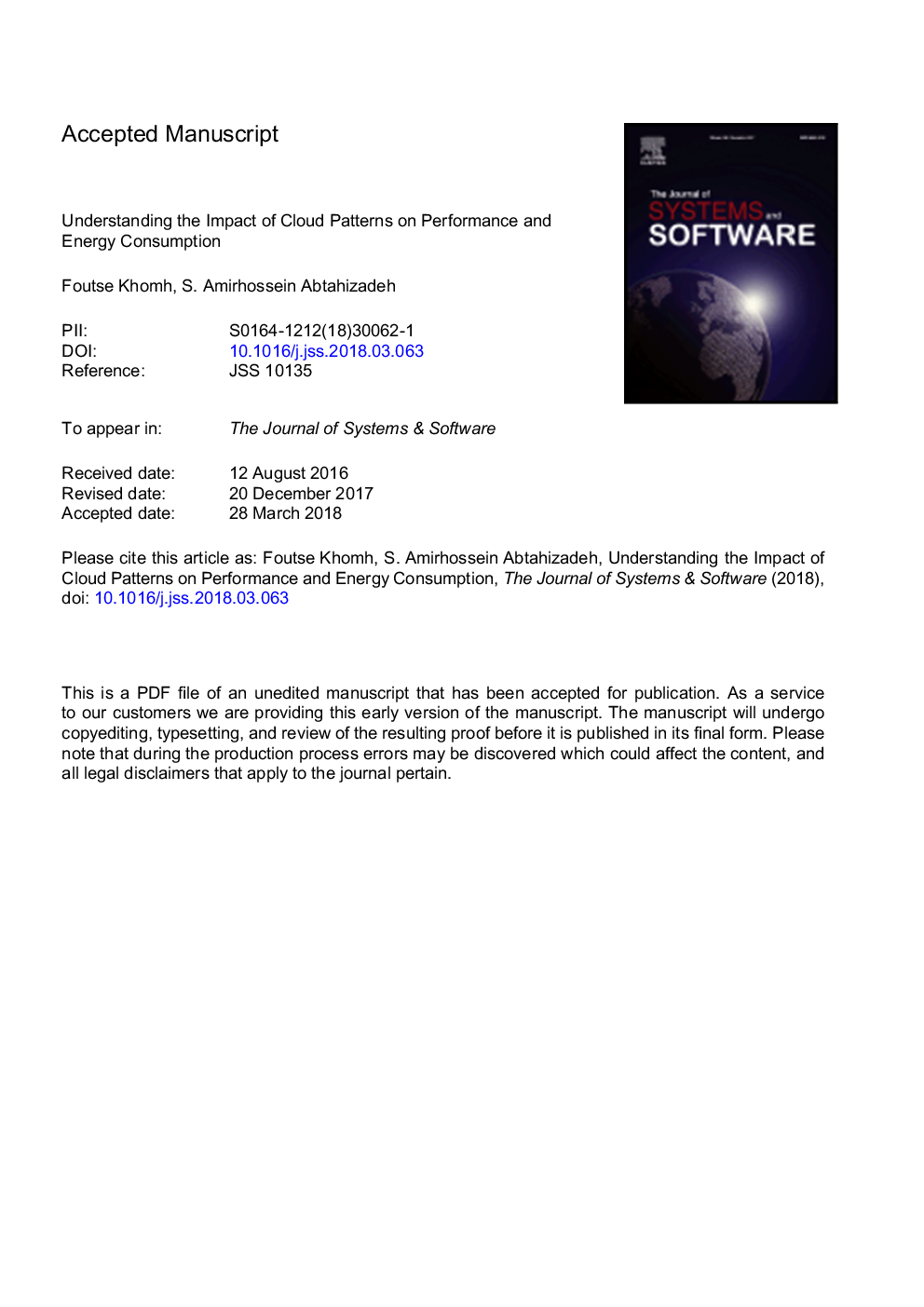| Article ID | Journal | Published Year | Pages | File Type |
|---|---|---|---|---|
| 6885310 | Journal of Systems and Software | 2018 | 24 Pages |
Abstract
Cloud patterns are abstract solutions to recurrent design problems in the cloud. Previous work has shown that these patterns can improve the Quality of Service (QoS) of cloud applications but their impact on energy consumption is still unknown. In this work, we conduct an empirical study on two multi-processing and multi-threaded applications deployed in the cloud, to investigate the individual and the combined impact of six cloud patterns (Local Database Proxy, Local Sharding Based Router, Priority Queue, Competing Consumers, Gatekeeper and Pipes and Filters) on the energy consumption. We measure the energy consumption using Power-API; an application programming interface (API) written in Java to monitor the energy consumed at the process-level. Results show that cloud patterns can effectively reduce the energy consumption of a cloud-based application, but not in all cases. In general, there appear to be a trade-off between an improved response time of the application and the energy consumption. Moreover, our findings show that migrating an application to a microservices architecture can improve the performance of the application, while significantly reducing its energy consumption. We summarize our contributions in the form of guidelines that developers and software architects can follow during the implementation of a cloud-based application.
Related Topics
Physical Sciences and Engineering
Computer Science
Computer Networks and Communications
Authors
Foutse Khomh, S. Amirhossein Abtahizadeh,
